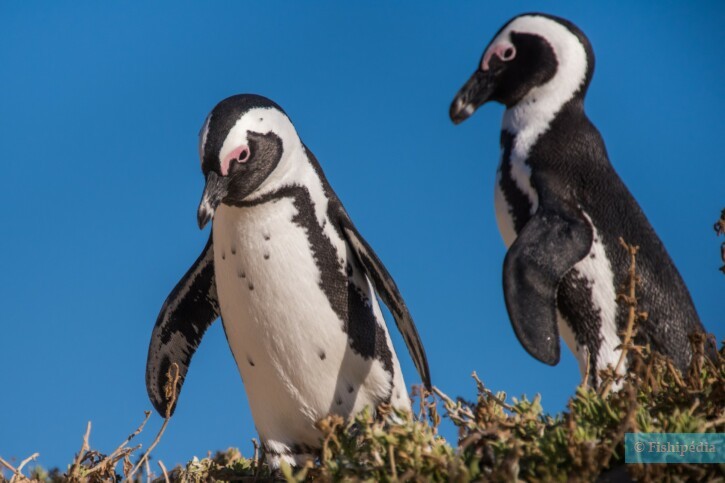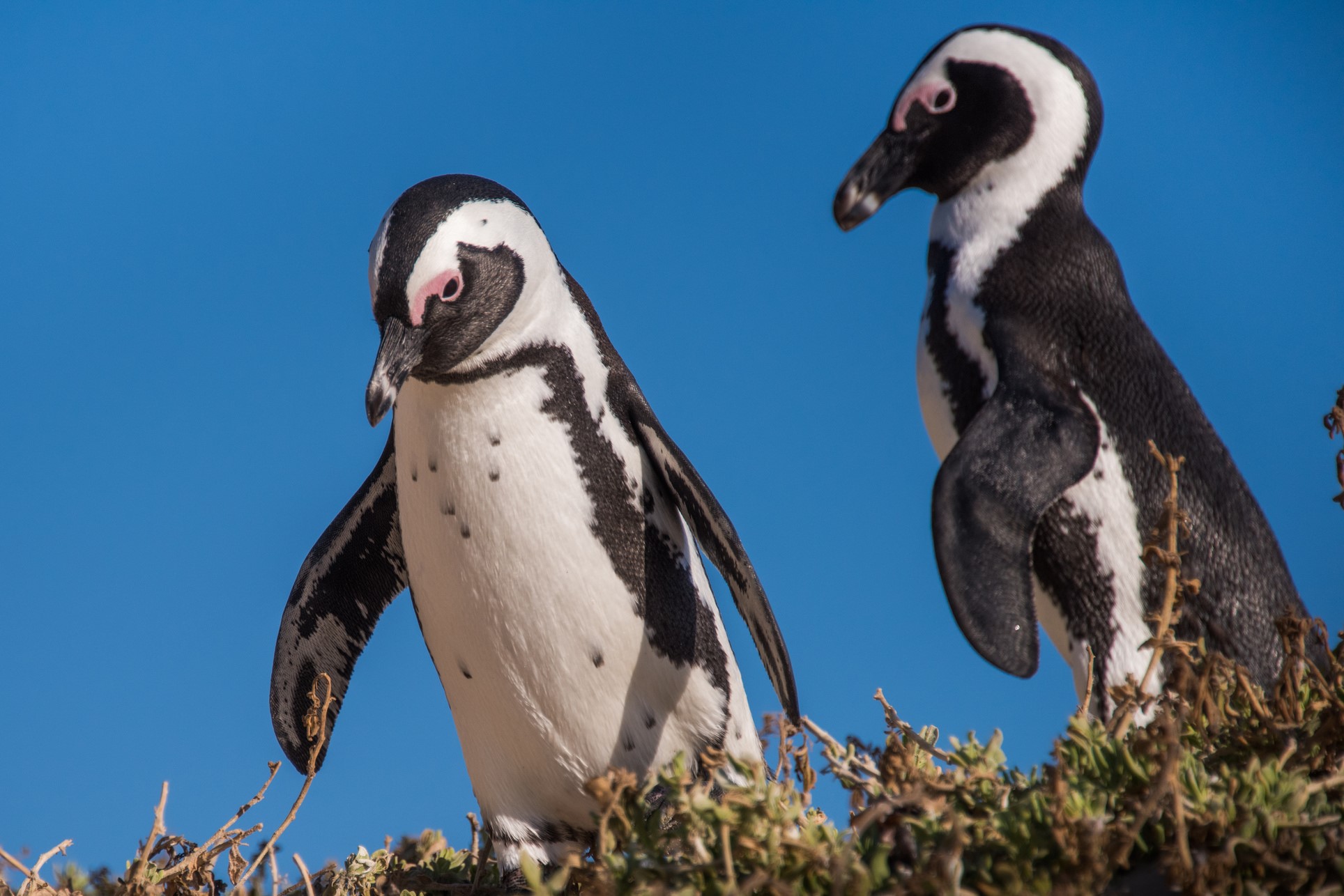Introduction
The African penguin, native to the coastal areas of South Africa and Namibia, is recognizable by its black and white plumage. This penguin primarily feeds on fish and squid.
Like its relatives, the African penguin breathes air outside of the water and is capable of long dives underwater. Its aquatic outings frequently reach depths of 15 meters, but some individuals have been observed at over 70 meters.
During the breeding season, males sing to attract females. Females also vocalize to strengthen the couple's bond.
Who is it?
Morphology
-
Size60 - 70 cm
-
Size60 - 70 cm
How to recognize This Bird ?
The African penguin measures between 60 and 70 cm in height and weighs between 2 to 3.7 kg. It has a distinctive black and white plumage. Its back is entirely black, extending to the axillary region, with sometimes a whitish spot on the tail.
The wings are black on the top, with a white edge often incomplete, while the underside is marked with blackish and white or pale pink, with a great variety of patterns.
The head is adorned with a pink orbital ring and a white band extending from the facial region to the top of the chest, thus separating the black from the white.
Adults and juveniles have subtle differences in their plumage, but both display this distinctive color combination that distinguishes them from other penguin species.
Behaviour & Life cycle
-
dietcarnivorous
-
Sociabilitygregarious
-
territorialYes
-
Way of livingdiurnal
The African penguin is known for its gregarious social behavior. It emits loud calls, especially at night. It feeds in groups, diving into coastal waters in search of prey.
Groups of 25 to 165 individuals are often seen fishing together, using cooperative hunting techniques to surround schools of fish. It is much faster and more agile when moving in its natural element, the tumultuous waters of the ocean.
Reproduction
-
Reproductionovipare
The reproduction of the African penguin takes place throughout the year, with local variations. Couples gather on coastal islands to nest, choosing sheltered spots such as sand hollows or rarely marine caves.
Egg laying periods vary depending on the geographic location, with peaks observed between November and January in the northwest of its range, between May and July in the southwest, and between April and June in the east. Couples share responsibilities for incubation and chick rearing.
Harmless species
This species does not represent any particular threats to humans when encountered in its natural environment.
Origin and distribution
Geographic distribution & Conservation
The African penguin is native to South Africa and Namibia, where it is found along rocky coasts and coastal islands. It is rare to see it east of Algoa Bay in the Eastern Cape province of South Africa. Observations suggest that juveniles from breeding colonies in this region migrate along the KwaZulu-Natal coast, attracted by migrating fish shoals.
Stray individuals have been recorded as far as Gabon to the west and Mozambique to the east, attesting to the wide distribution of this iconic species of African marine fauna.
Conservation status of populations (IUCN)
What is its habitat?
Natural environment characteristics
-
Temperature4 - 20 °C
-
Depth0 - 70 m
-
FlowMedium
Biotope presentation
The African penguin thrives near and within shallow coastal waters. It prefers flat sandy islands, although it can sometimes be found on steep rocky islands. Outside of the breeding season, it spends most of its time at sea, feeding on pelagic fish and cephalopods near the coast.
To go further
Sources & Contributions
Participation & Validation
The Fishipedia team and specialist contributors are committed to providing high-quality content. However, although the information comes from scientific sources or testimonials from specialists, the cards may contain inaccuracies.

Benoit Chartrer
Translation
Translation done with the valuable contribution of our translators, who make this information available to a wider audience. We sincerely thank them for their commitment.
Scientific partners
Tags















